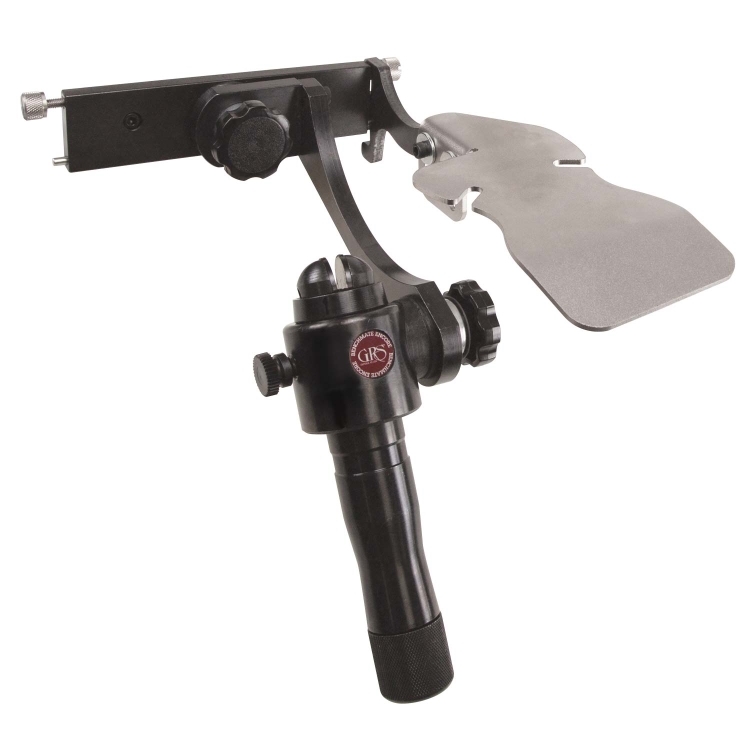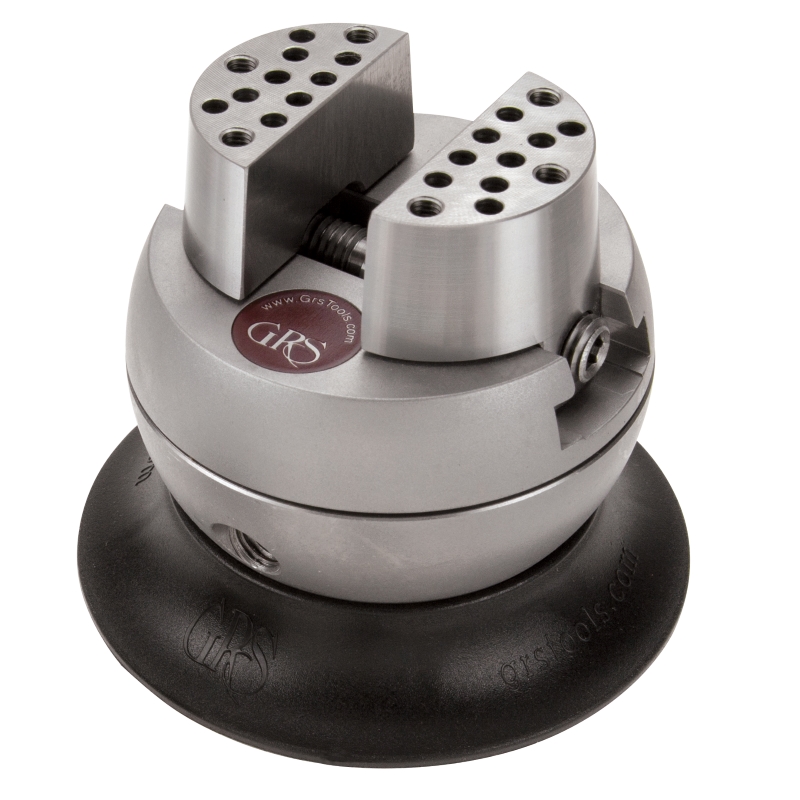GRS BenchMate vs. MicroBlock: Who is the Workholding Champ?
Every jeweler has their personal preference when it comes to workholding solutions. Some swear by their BenchMate®, while others couldn’t work without their MicroBlock® vise. When comparing the GRS BenchMate vs. MicroBlock, it’s important to consider their unique advantages and how they fit into your workflow. This guide will help you understand the benefits and use cases of each, so you can decide which one best matches your needs.
GRS BenchMate vs. MicroBlock: When to Use Each
The GRS BenchMate: A Versatile Workholding System
Whether you’re relatively new to engraving and stone setting or are already well established, the GRS BenchMate is an excellent workholding solution. Let’s break down some of the pros and use cases:
Why Choose the BenchMate?
- Hands-Free Workholding – Once you switch out your wooden ring holder for a BenchMate, you’ll wonder how you ever worked without it.
- Ergonomic & Adjustable – Easily moves and tilts to find the perfect working position.
- Space-Saving – Mounts to your existing jeweler’s bench, eliminating the need for a separate workstation.
- Interchangeable Attachments – Easily swap out with an inside ring holder, shellac plate, or other accessories.
- Secure for Hammer Setting – Unlike a vise, the BenchMate can be locked in place when setting with a hammer and punch.
- Stabilizes Small Workpieces – Great for holding sheet silver while filing a flat edge.
- Cross Compatibility – Easily switch between any of the fixtures that use the fixed mounting plate.
Things to Keep in Mind
- Some Bounce Back – Because it isn’t supported from underneath, you may lose some applied force when setting stones. A solid object placed underneath can help reduce this.
- Less Portability – You’re limited to working in locations that have a mounting plate already attached.

The GRS MicroBlock : Precision and Control
For those who need maximum control and maneuverability, an engraving vise like the GRS MicroBlock is a fantastic option. Many engravers and advanced stone setters prefer it for detailed work.
Why Choose the MicroBlock?
- 360-Degree Rotation – Allows for smooth and precise movement, making it ideal for engraving small items and stone setting.
- Ergonomic & Adjustable – Just like the BenchMate, it enables optimal working angles.
- Portable – Heavy enough for stability but small enough to transport easily.
- Perfect for Microscope Work – Easier to maneuver under magnification compared to a BenchMate.
- No Bounce Back – Ensures that all force applied when setting stones goes exactly where intended.
Things to Keep in Mind
- Moves During Hammer Setting – Not as stable as a BenchMate or larger ball vises for hammer and punch or some hand pushing techniques.
- Needs a Dedicated Work Surface – Most jeweler’s benches are too high for comfortable use, requiring a lower setting bench.

Best Use Cases for the GRS BenchMate and MicroBlock
When deciding between the GRS BenchMate vs. MicroBlock, it’s helpful to consider what type of work you do most. Below are some of the best use cases for each tool.
Best Use Cases for the GRS BenchMate
- Stone Setting with a Hammer & Punch – The BenchMate holds work securely and doesn’t shift, making it ideal for bezel, prong, and flush settings where stability is critical.
- Holding Rings for Inside & Outside Work – The BenchMate’s inside ring holder securely grips rings from the inside, making it perfect for engraving, setting, and finishing without distorting the band.
- Filing & Shaping Metal – It stabilizes metal sheets and small parts, making it easier to maintain straight edges and precise angles when filing.
- Ergonomic Hands-Free Workholding – Since it mounts to your bench, it allows jewelers to work hands-free, reducing strain and increasing comfort during long sessions.
Best Use Cases for the GRS MicroBlock
- Hand Engraving & Decorative Work – The 360-degree rotation allows for smooth, controlled movement, making it perfect for engraving intricate designs on jewelry and metal.
- Stone Setting Under a Microscope – The MicroBlock’s maneuverability makes it the preferred choice for detailed work requiring high magnification, such as micro pavé and bead setting.
- Holding Small & Irregularly Shaped Pieces – The vise’s jaws and additional attachments allow for a firm grip on odd-shaped workpieces, including curved or domed surfaces.
- Portability for On-the-Go Work – Unlike the BenchMate, the MicroBlock doesn’t require a fixed mount, making it ideal for jewelers who need a mobile setup for trade shows, workshops, or travel.
GRS BenchMate vs. MicroBlock: Which One Should You Try First?
Both tools have their place in a jeweler’s workspace. If you work primarily with stone setting, soldering, and general jewelry making, the BenchMate is an excellent first investment. If you do engraving or need precise control for detailed work, a MicroBlock or engraving vise might be your best bet.
Ultimately, many jewelers use both to cover a range of tasks. If you can, try them out and see which one feels right for your workflow. No matter which one you start with, you’ll find a workholding solution that makes your craft more efficient and enjoyable! Come take a class at the GRS Training Center to try the tools yourself with expert instruction.